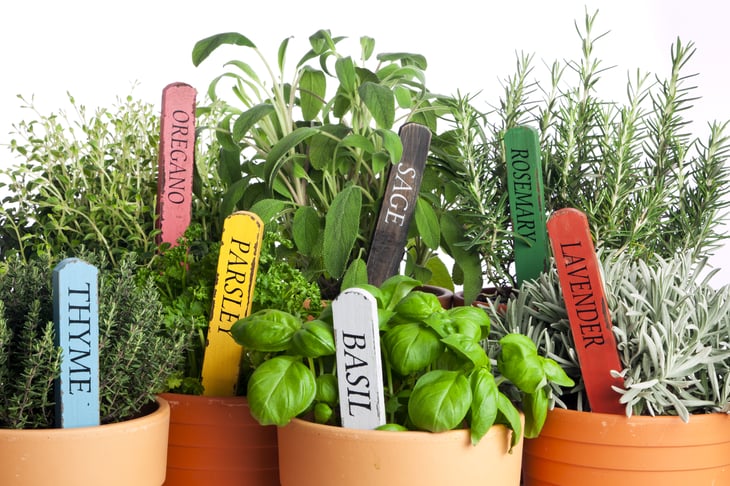
Editor's Note: This story originally appeared on LawnStarter.
Grow basil an arm’s length from where you make your pizzas, or let chives thrive inside your home.
How to grow herbs in your kitchen and which herbs require the least care — we’ll cover all that in this guide to growing herbs indoors.
And if you’re used to growing your herbs in your garden, why go without this greenery for those months when the temperatures turn cold? When winter draws near, it’s thyme to move your herbs indoors, and we’ll show you how.
Tips for Growing Herbs Indoors
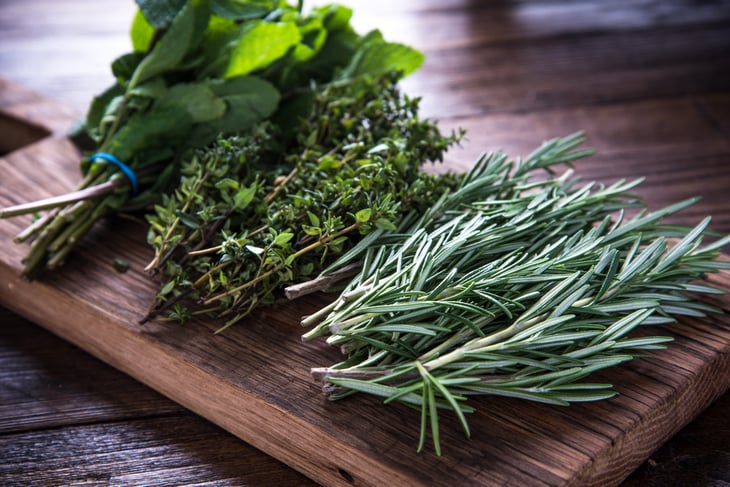
First, let’s start with some tips for growing herbs indoors:
- Use a high-quality potting mix.
- Read and follow the directions on seed packets.
- Follow your fertilizer’s label directions.
- Remember snipping herbs keeps them growing.
- Don’t beat yourself up if something dies. Try again.
Having herbs indoors isn’t just handy for adding flavor, taste, and texture to your favorite meals. You also get the benefit of the fresh scents of herbs in your kitchen and home.
Wondering how to get started growing herbs indoors? Start with these five herbs that require very little care.
1. Basil
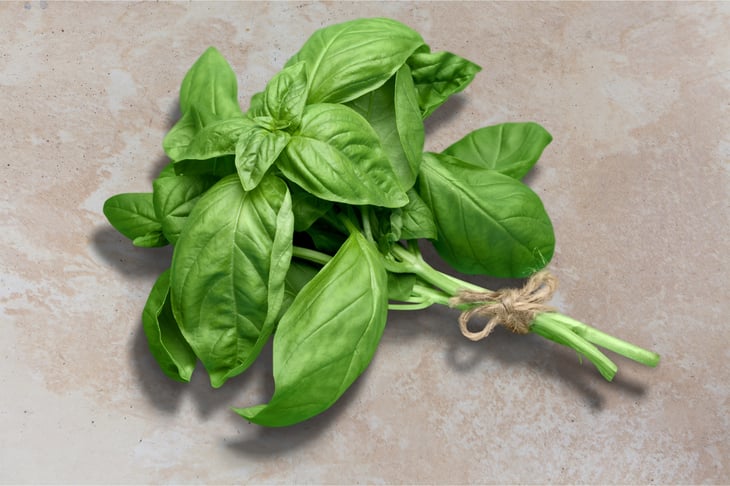
Basil is one of the most popular herbs to grow and eat. All parts of this annual are edible, including the flowers. Slice a tomato and a ball of mozzarella, layer those and basil leaves, then add a drizzle of balsamic glaze for a fresh caprese salad.
Basil makes the transition from outdoors to indoors with barely a dropped leaf. It’s easy to start from seed, too.
- Sun: Give basil as much light or sun as you can.
- Water: Keep soil moist but not sopping wet.
- Care: Control flowering and size by pinching or snipping back by one-third to one-half. This will encourage the plant to produce more leaves.
- Growth: You can sow basil seeds every few weeks to a continuous crop of fresh leaves.
Be on the lookout for basil downy mildew on the plants you brought indoors. This disease turns leaves brown and fuzzy.
If you find it on your indoor basil, it’s best to toss it and start over. Don’t use the seeds from affected plants. Dump the potting mix and scrub the pot.
2. Chives
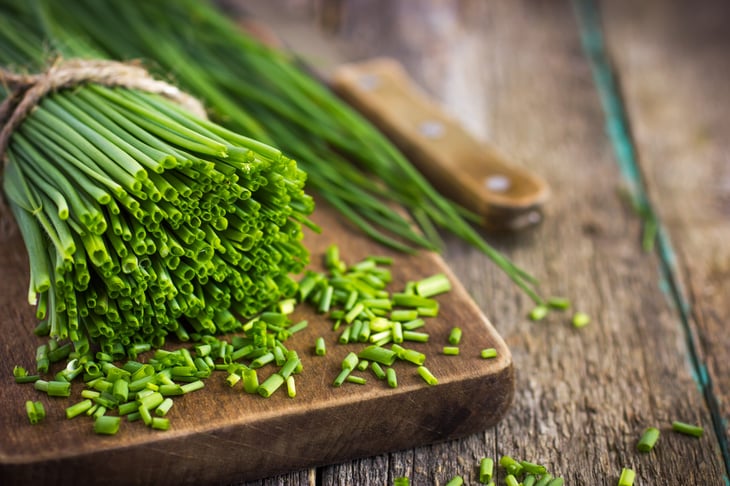
Chive plants, which have a mild onion flavor, develop a purple flower, which is edible. You’ll find chives in all sorts of recipes, from dips and soups to salads and egg dishes for breakfast.
- Sun: Chive plants tolerate less light than other herbs, so grow them in a bright window.
- Water: Water when soil feels dry.
- Care: Outdoors, chive plants self-sow a bit, so consider snipping off the flower.
- Growth: Because chive is an evergreen, you can grow it year-round outdoors. Or pot your chive and bring it indoors. Chive plants thrive just about anywhere.
3. Parsley
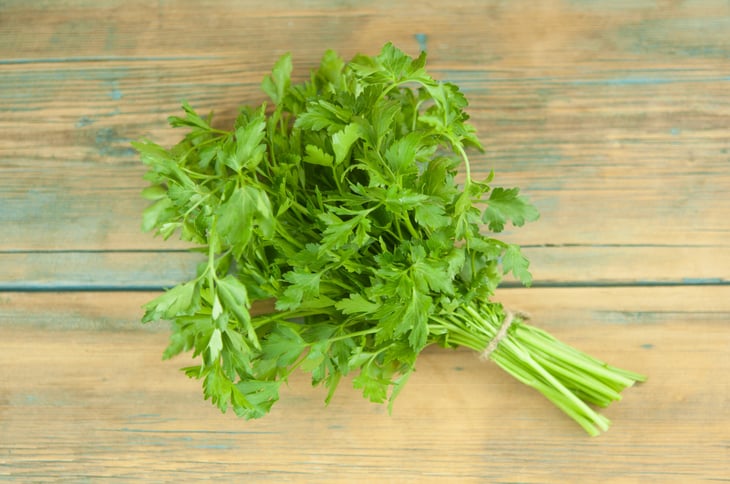
There’s something about parsley — either curly or flat leaf — that takes food a step closer to fresh. Sprinkled on about anything, it adds color and flavor. The simplest way to ensure you will have parsley year-round? Move your parsley plant from the garden to indoors.
- Sun: Grow parsley in a bright window. It needs less light than other herbs.
- Water: Water when soil feels dry.
- Care: Trim off a sprig as garnish or for recipes as needed.
- Growth: A biennial herb, parsley can be a little bit of a challenge to start from seed.
Note: Keep parsley out of reach of pets, as the ASPCA notes that parsley can be toxic in large quantities for dogs and cats.
4. Rosemary
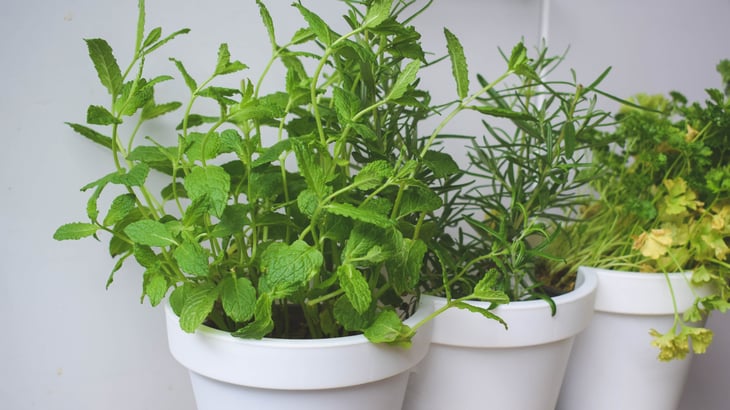
Exotic rosemary, at home in the Mediterranean, offers not just tasty leaves, but a wonderful fragrance, too. Rosemary also is the herb of remembrance, commonly used at celebrations and funerals. It’s possible your rosemary will have blue flowers in December or January.
- Sun: Grow in full sun or brightest light.
- Water: Keep soil slightly moist, but don’t let it dry out.
- Care: If rosemary is your go-to herb, bigger is better so you can selectively snip stems.
- Growth: You can grow rosemary from seed. It takes two to three weeks for it to germinate. Rosemary is a woody plant, like a shrub, so it doesn’t regrow quickly like basil and other annual herbs.
5. Thyme
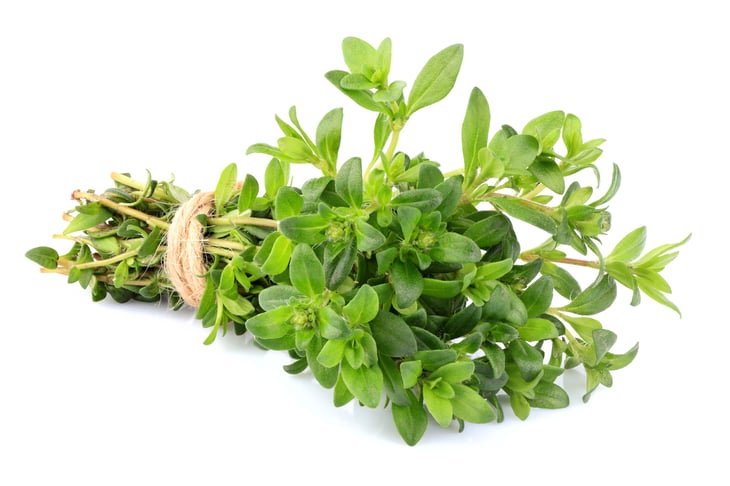
Thyme, another perennial, woody herb, is easy to grow indoors, where you can strip leaves from the stems for flavoring dozens of dishes. For a couple of recipes using this herb, try sauteed carrots and thyme, thyme tea, or a lemon thyme sauce.
- Sun: Place thyme in a bright or sunny window.
- Water: Water when the soil feels dry.
- Care: Thyme is a perfect herb for new gardeners. Just make sure your thyme gets enough sun.
- Growth: Grows to about 6 to 12 inches tall.
Thyme is a main ingredient of bouquet garni, along with parsley and bay leaf.
How to Grow Herbs Indoors in Winter

Have pots, will travel — that’s a year-round gardener’s mantra — and it especially applies to herbs.
When chilly temperatures are on the way, it’s time to move herbs indoors for winter.
How to move your herbs indoors for winter? That’s easy.
- If you’ve been growing herbs in pots outdoors, pick them up and move them to a kitchen counter or windowsill in your home.
- If your herbs are in the ground in your garden, dig them up, pot them up, and carry them inside.
But before you move your herbs inside …
- Inspect for insects: Check your plants, soil, and pots to make sure you aren’t bringing in any insects.
- Check for diseases: If there are diseased leaves on your plants, pinch those off.
- Shower power: Give the plants a good shower before bringing them inside.
- Find the perfect spot: Set the pot in a bright or sunny window or the kitchen counter.
A couple of things to keep in mind about growing herbs (and other outdoor plants) indoors in winter:
The heat effect: Keeping your home warm often means indoor plants will dry out faster. Keep your herbs and other greenery well watered. Don’t put plants near heat vents — or where cold air can seep through windows.
Keep pets away: Some plants — see the note about parsley above — can be toxic to dogs and cats when eaten in large quantities. While putting plants on kitchen counters keeps them out of reach of Fido, Fluffy goes wherever she wants.
Accidents happen: Your potted herbs and other plants can be knocked to the floor by a crazed cat, a wild child, or you when you return from the supermarket with loads of grocery bags. Don’t worry. Clean up the herb, dirt, and pot shards and get another plant (if available in winter).
Although the herbs are easy to grow in pots indoors, the biggest hurdle to success is light. Place herbs in the sunniest and brightest windows you have. If plants struggle and fail to thrive, consider adding supplemental light. It can be something simple, such as fluorescent bulb workshop lights. By the way, workshop-type lamps are available as LEDs.





Add a Comment
Our Policy: We welcome relevant and respectful comments in order to foster healthy and informative discussions. All other comments may be removed. Comments with links are automatically held for moderation.